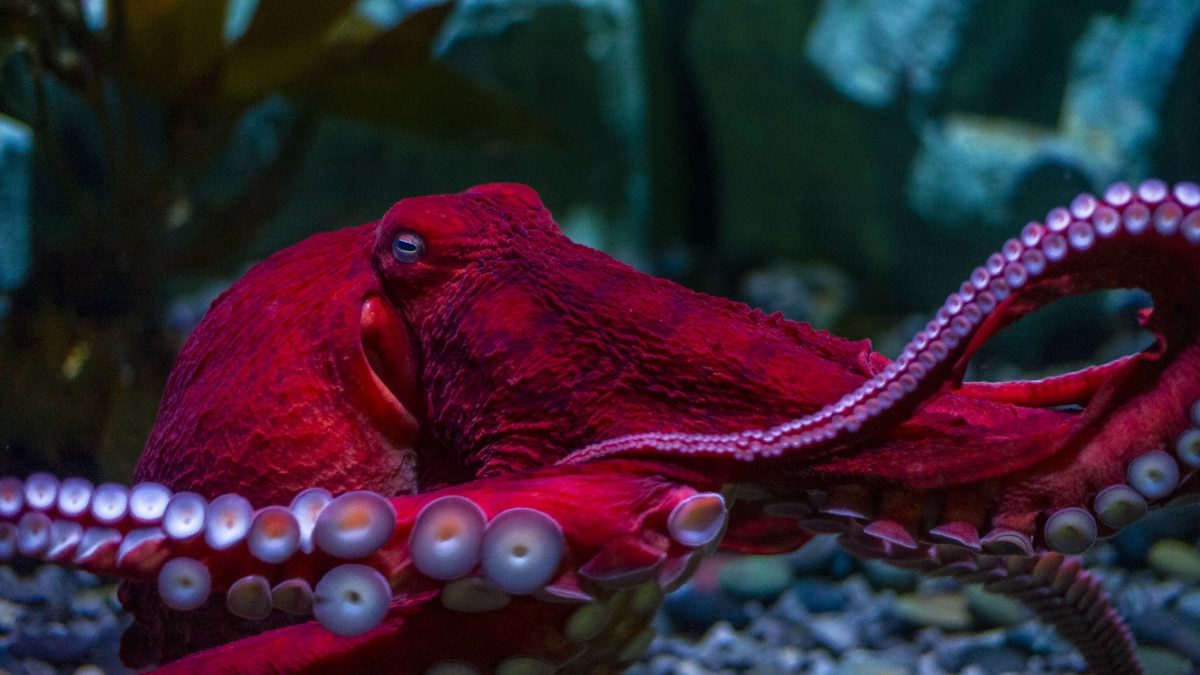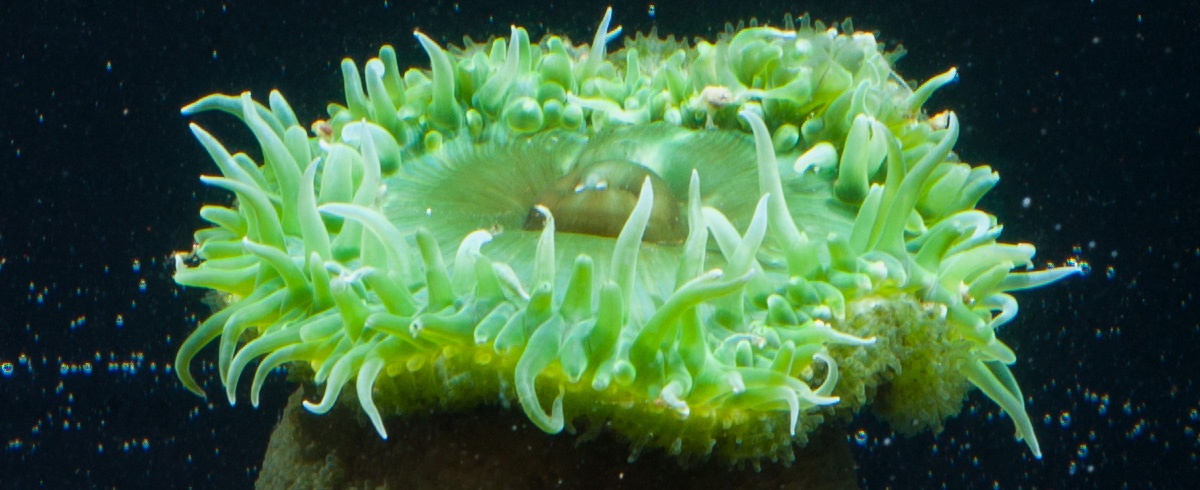The Giant Pacific Octopus is the largest known species of octopus. This species is considered long-lived among octopuses. It takes 3-5 years for a Giant Pacific Octopus to complete its lifecycle and reach an average max weight of 50 pounds. Giant Pacific Octopus reproduce only once in their life and females may produce an average of 50,000 eggs about the size of a grain of rice. They dutifully tend and protect the eggs to ensure the survival of the next generation. Octopuses are intelligent and highly adaptable animals. At the Aquarium, the octopuses are given puzzles to solve such as a lidded jar with a piece of food inside. They quickly learn to unscrew the tops of the jars to get to the food inside.
Like other species of octopus, Giant Pacific Octopuses are known for their ability to change the color and texture of their skin. This adaptation not only helps them camouflage and avoid predators but can also be used to communicate with other octopuses. Octopuses belong to a group of invertebrates known as cephalopods, and they lack bones and external shells. Their soft bodies can easily squeeze into cracks, dens and crevices for protection.
The beak of an octopus looks very similar to a parrot’s beak, and it is made from chitin, which is similar to what our fingernails are made of. Octopuses are predators and feed primarily on fish and crustaceans. When octopuses bite, they inject saliva into the prey. Toxins in the saliva help immobilize the prey and begin the digestion process. It’s important that their food is soft when it is swallowed because their esophagus passes through the middle of their doughnut-shaped brain before reaching their stomach.







